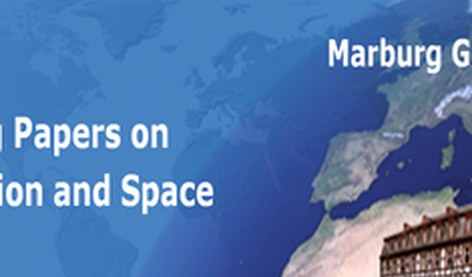Hauptinhalt
Forschung
Inhalt ausklappen Inhalt einklappen Lagging regions and policy
Involved researchers: Thomas Brenner, Tobias Hertrich, Fatih Celebioglu, Abdulhak Anwer Alsharif, Mirco Kühl
The growing inequality between regions is one of the main economic problems in Germany, the EU and many other spatial entities. Various policy measures, such as the GRW funds, are taken in order to foster economic development in the lagging regions. Our research agenda aims to support policy makers by enlarging the understanding for economic dynamics and innovativeness in lagging regions, by providing indicators for structural weaknesses and classifications of regions, and by examining the effects of policy measures and their dependence on regional circumstances. Part of this research is done within the projekt StRegInno funded by the German Ministry of Education and Research.
Related projects:
- TeamMit
- DFG
Related publications:
- Wardenburg, S.; Brenner, T. (2020): How to improve the quality of life in peripheral and lagging regions by policy measures? Examining the effects of two different policies in Germany. Journal of Regional Science, DOI: 10.1111/jors.12500.
- Eberle, J.; Brenner, T.; Mitze, T. (2020): Public Research, Local Knowledge Transfer, and Regional Development: Insights from a Structural VAR Model. International Regional Science Review 43(6), 555-586.
- Abraham, M.; Brenner, T.; Eberle, J.; Gniza, J.; Lehmann, I.; Wardenburg, S.; Wrede, M. (2020): Gerechtigkeit schlägt Effizienz: Prinzipien der regionalen Umverteilung, Sozialer Fortschritt 69, 73-95.
- Brenner, T.; Pudelko, F. (2019): The effects of public research and subsidies on regional structural strength. Journal of Evolutionary Economics 29, 1433-1458.
- Eberle, J.; Brenner, T.; Mitze, T. (2019): A look behind the curtain: Measuring the complex economic effects of regional structural funds in Germany, Papers in Regional Science 98, 701-735.Inhalt ausklappen Inhalt einklappen Nexus of climate change, health and (im)mobility
Involved researchers: Thomas Brenner, Ann-Christine Link, Saeed Khan
Climate change is considered a risk multiplier not only when it comes to human (im)mobility (migration, displacement, and planned relocation) but also health (physical and mental). The goal of the working group is to disentangle parts of the nexus between climate change, migration and health to not only get a better understanding of the connections between the parts of the nexus but also to support people on the move, people with high health risks as well as people finding themselves in trapped situations. Accordingly, we work on the following research themes:
1) Impacts of meteorological and air conditions on pneumonia and influenza hospitalizations, considering the influence of various personal characteristics (age, sex, pre-existing diseases, etc.) in Germany
2) Impacts of climatic and environmental factors on internal migration in Europe and internal and international migration in Germany
3) The integration of human (im)mobility in the context of climate change into relevant national policies such as NAPs and NDCs, as well as the specific consideration of the climate change, human (im)mobility, and health nexus
4) A climate resilience and well-being comparison of people in the Global South with and without a migration background (e.g., Ethiopia, India)
5) Assessing the well-being and integration of Ukrainian refugees in Germany and internally displaced people (IDPs) in Ukraine due to the Russian war in Ukraine
Related projects:
- HABITAT
- DAAD
Related publications:
- Link, A. C., Zhu, Y., & Karutz, R. (2021). Quantification of Resilience Considering Different Migration Biographies: A Case Study of Pune, India. Land, 10(11), 1134.
- Brenner, T., Link, A-C., Reidenbach, C., Pott, H., Rupp, J., Witzenrath, M., Rohde, G., Pletz, M., Bertrams, W., Schmeck, B. & CAPNETZ study group (2022): Effects of Regional Meteorological and Air Conditions on Community-Acquired Pneumonia - Examining the Interaction of Individual, Meteorological, and Air Characteristics, Vol. 01.22.
- Mombauer, D., Link, A. C., & Van Der Geest, K. Addressing climate-related human mobility through NDCs and NAPs: State of play, best practices, and the way forward. Frontiers in Climate, 5, 21.


